Flannel is a beloved textile known for its exceptional softness, warmth, and cozy appeal. With a rich history dating back centuries, flannel has evolved into a versatile, cherished fabric for its comfort and versatility.
Whether it’s a flannel shirt, a cozy blanket, or a warm pair of pajamas, flannel has found its way into our lives in various forms. This fabric can be made from different materials, such as wool, cotton, or synthetic fibers, each offering unique qualities.
From its brushed or unbrushed texture to its loose weave, flannel fabric provides insulation by trapping air and retaining body heat.
In this exploration of flannel, we will delve into its characteristics, uses, care tips, and environmental considerations. So, join us on this journey as we unravel the warmth and comfort of flannel fabric.
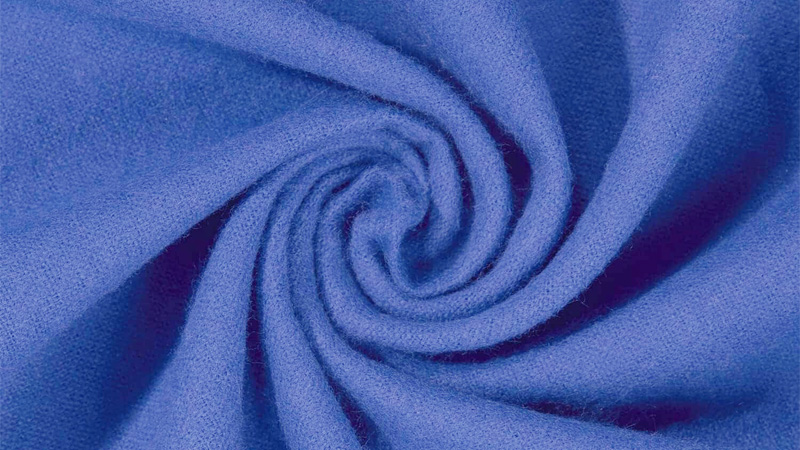
What is Flannel Fabric?
Flannel is a versatile fabric renowned for its softness and warmth. It can be crafted from wool, cotton, or synthetic fibers. The distinguishing feature of flannel is its texture, which can be brushed or unbrushed.
Brushed flannel undergoes a treatment where the surface fibers are raised, resulting in a plush and fuzzy feel. Unbrushed flannel, on the other hand, maintains a smooth texture.
This fabric is widely applied in clothing, blankets, bed sheets, and sleepwear due to its exceptional comfort and insulating properties. Flannel has become a beloved choice for those seeking cozy and snug textiles.
History of Flannel Fabric
The flannel fabric has a rich history that dates back to the late seventeenth century in Wales. Initially created by Welsh textile workers using leftover sheep’s wool, flannel quickly gained recognition for its comfort, warmth, and moisture-wicking properties.
Initially woven by hand, flannel’s popularity spread beyond Wales, leading to its production in other regions like Scotland and Northern England. With the advent of the Industrial Revolution, flannel production became more efficient and widespread.
In the nineteenth century, flannel found favor in North America, particularly among laborers working in colder climates.
Today, flannel continues to be cherished for its softness, warmth, and versatility, finding applications in clothing, bedding, and more.
The history of flannel showcases its humble origins and transformation into a beloved textile appreciated for its exceptional qualities.
Flannel Fabric Characteristics

Here are the step-by-step characteristics of flannel fabric:
Material
Flannel fabric is commonly made from cotton but can also be crafted from wool or synthetic fibers. Cotton flannel is highly preferred due to its softness, breathability, and ability to retain warmth.
Weight
Flannel is classified as a medium-weight fabric. It is not too heavy or bulky, making it suitable for various clothing and bedding applications.
Texture
The distinguishing feature of flannel is its napped finish, which gives it a soft and fuzzy texture. This napped surface can be achieved by brushing the fabric or its inherent loose weave. The brushing process raises the fibers, creating a plush and cozy feel.
Warmth
Flannel fabric is known for its excellent insulation properties. The fuzzy texture traps air, creating a layer of warmth and helping to retain body heat.
It is famous for winter clothing, blankets, and bedding, providing comfort in colder temperatures.
Softness
Flannel fabric is exceptionally soft to the touch. The brushing or loose weave process creates a surface that feels gentle and comforting against the skin.
This attribute contributes to the comfort and coziness of garments and home textiles made from flannel.
Breathability
Despite its warmth, the flannel fabric remains breathable. The cotton fibers allow air circulation, preventing overheating and promoting comfort during sleep or physical activity.
Absorbency
Cotton flannel has good moisture-wicking properties, which can absorb and wick away sweat from the body. This attribute makes it popular for items like pajamas and bed sheets, as it helps maintain a dry and comfortable environment.
Durability
Flannel fabric is known for its durability and longevity. It can withstand regular washing and wear without losing its softness or shape. Proper care and maintenance can ensure that flannel garments and linens last for a long time.
Versatility
Flannel is a versatile fabric that can be used in various applications. It is commonly used for making shirts, pajamas, robes, skirts, and dresses. Additionally, it is a favored choice for blankets, sheets, pillowcases, and other bedding items.
Types of Flannel Fabric
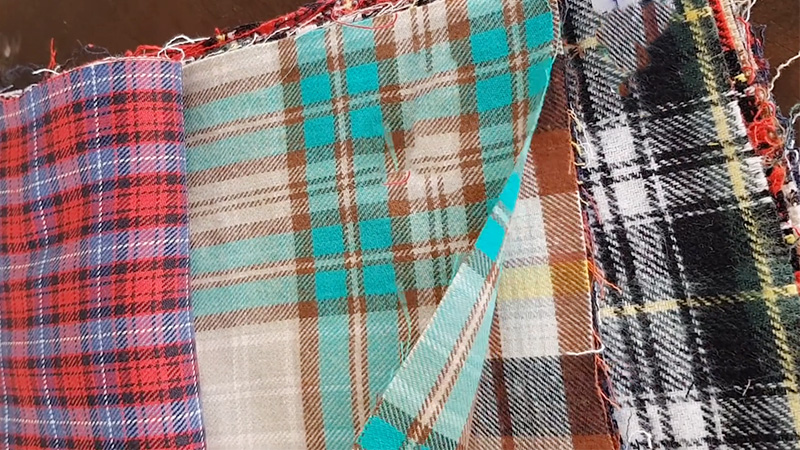
Here are the step-by-step explanations of different types of flannel fabric:
Wool Flannel
Wool flannel is the traditional type of flannel that originated in Wales. It is typically made from wool fibers, offering excellent insulation and warmth.
This flannel type has a soft, fuzzy texture and is known for its durability and natural moisture-wicking properties.
Cotton Flannel
Cotton flannel is a popular type of flannel fabric. It is made from cotton fibers, which provide a soft and breathable feel. Cotton flannel is lightweight, comfortable, and suitable for various applications, including clothing, bedding, and accessories.
Synthetic or Mixed Flannel
Flannel can also be made from synthetic fibers or a blend of artificial and natural fibers. Synthetic flannel fabrics like Polyester or acrylic blends offer affordability, durability, and easy care. They often mimic the softness and warmth of wool or cotton flannel.
Ceylon Flannel
Ceylon flannel is a lightweight fabric that originated in Sri Lanka (formerly known as Ceylon). It is typically made from cotton or a blend of cotton and synthetic fibers.
Ceylon flannel is known for its softness, smooth texture, and drape, making it suitable for clothing like shirts and dresses.
Baby Flannel
Baby flannel is designed explicitly for infant clothing and accessories. It is typically made from soft and gentle cotton fibers, ensuring a delicate touch against the baby’s skin. Baby flannel is lightweight, breathable, and often features cute patterns or prints.
Diaper Flannel
Diaper flannel is a flannel fabric specially manufactured for making cloth diapers. It is designed to be highly absorbent, soft, and durable.
Diaper flannel is typically made from cotton or a blend of cotton and synthetic fibers to provide comfort and functionality.
Vegetable Flannel
Vegetable flannel, also known as brushwood flannel, is a type of flannel fabric made from the fibers of the abaca plant. It has a coarse texture and is primarily used for industrial purposes, such as polishing or buffing surfaces.
Flannelette
Flannelette is a lightweight, cotton-based fabric that resembles flannel in texture and appearance. It is often made from a blend of cotton and synthetic fibers and is known for its softness and warmth. Flannelette is commonly used for making bed sheets, pillowcases, and sleepwear.
These are some of the different types of flannel fabric, each offering unique characteristics and suitability for various purposes.
From traditional wool flannel to lightweight cotton flannel and specialized varieties like baby flannel or diaper flannel, there is a type of flannel to meet different needs and preferences.
What is Flannel Fabric Made of?
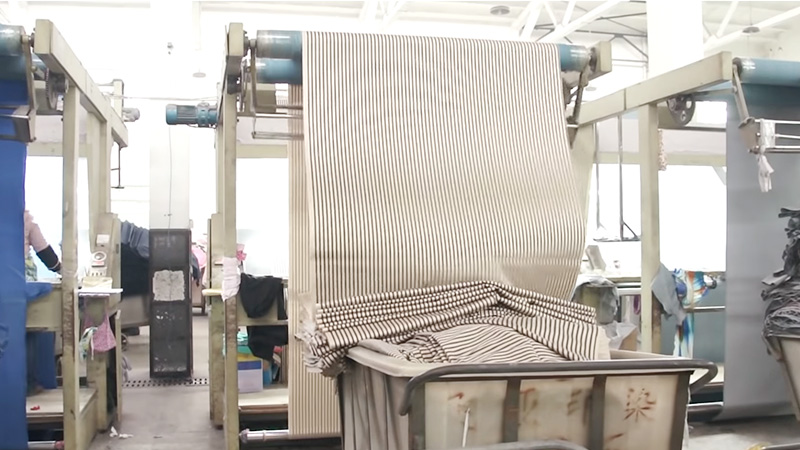
Flannel fabric can be made from various materials, including cotton, wool, or synthetic fibers. Here’s an explanation of what each type of flannel fabric is made of:
Cotton Flannel
Cotton flannel is made from cotton fibers. It is highly regarded for its softness, breathability, and comfort. The cotton fibers are woven together to create a fabric that is lightweight, absorbent, and ideal for both clothing and bedding.
Wool Flannel
Wool flannel is crafted from wool fibers sourced from sheep or other animals. Wool flannel is known for its exceptional warmth, insulation, and moisture-wicking properties. It is cozy and luxurious, making it suitable for cold-weather clothing and blankets.
Synthetic Flannel
Synthetic flannel refers to fabric made from synthetic fibers such as Polyester, acrylic, or a blend of different synthetic materials.
These synthetic fibers are engineered to mimic the softness and warmth of traditional flannel. Synthetic flannel often offers durability, easy care, and affordability.
Regardless of the material used, flannel fabric is characterized by its softness and can have either a brushed or unbrushed texture. Brushed flannel undergoes a process of raising the surface fibers, creating a fuzzy and plush feel.
Unbrushed flannel retains a smoother texture. Both brushed and unbrushed textures are equally iconic and sought after in flannel fabric.
The flannel fabric can be made of cotton, wool, or synthetic fibers. The choice of material determines the fabric’s specific qualities, such as softness, warmth, and breathability.
Whether it’s cotton, wool, or synthetic flannel, the common thread among them is their softness and the brushed or unbrushed texture that defines the beloved fabric.
What is Flannel Fabric Used for?
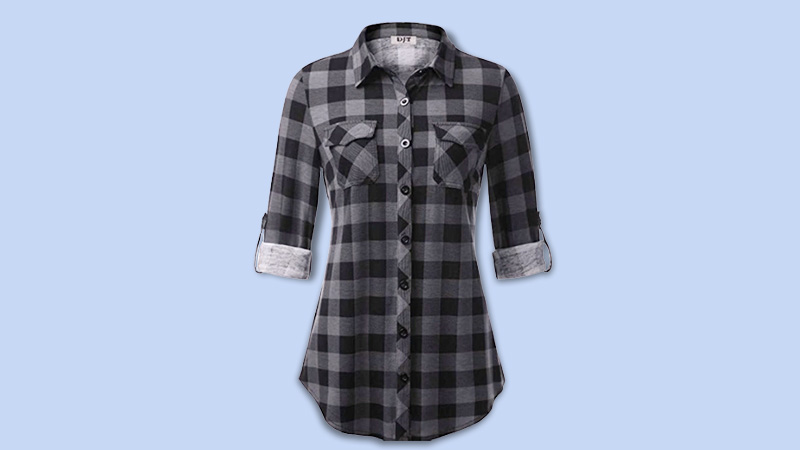
Flannel fabric finds a wide range of applications due to its desirable qualities. Here is an explanation of what flannel fabric is commonly used for:
Clothing
Flannel is extensively used in various types of clothing, especially for cold-weather garments. It is famous for making shirts, both casual and dressy, as well as cozy sweaters, cardigans, and jackets. The softness and warmth of flannel make it a comfortable choice for layering during colder seasons.
Bedding
Flannel is widely used to produce bed sheets, pillowcases, and blankets. Its insulating properties make it ideal for keeping warm and cozy during chilly nights. Flannel bedding provides a soft and inviting feel, ensuring a comfortable sleep experience.
Sleepwear and Loungewear
Flannel fabric is commonly utilized for creating sleepwear and loungewear items such as pajamas, nightgowns, and robes. The soft texture and warmth of flannel make it perfect for creating comfortable and snug sleep garments.
Baby and Children’s Apparel
Flannel is preferred for baby and children’s clothing due to its softness and gentle touch against delicate skin. It is often used for making onesies, pajamas, blankets, and accessories like bibs and burp cloths.
Craft Projects
Flannel fabric is a popular choice for various craft projects. Its versatility and availability in multiple colors and patterns make it suitable for sewing, quilting, and creating items like blankets, scarves, stuffed toys, and decorative accessories.
Home Décor
Flannel is also used in home décor items to add a cozy and inviting touch. It can be found in curtains, upholstery, tablecloths, and decorative pillow covers. Flannel’s warm and soft qualities create a comfortable and welcoming atmosphere.
Outdoor Gear
Flannel fabric is often incorporated into outdoor gear and accessories. It is used in manufacturing camping gear, such as sleeping bags and blankets, and outdoor clothing, like hiking shirts and jackets, providing insulation and comfort in cooler temperatures.
Flannel’s versatility, softness, and insulating properties make it a favored choice for various applications. Whether it’s clothing, bedding, sleepwear, crafts, or home décor, the flannel fabric adds a cozy and comfortable element to our lives.
Why is Flannel So Warm?

Flannel fabric is renowned for its exceptional warmth, and there are a few key reasons why it is so effective at retaining body heat:
Loose Weave
Unlike tightly woven fabrics, flannel has a loose weave structure. This loose weave creates air pockets between the fabric fibers. Air is an excellent insulator, and these air pockets in the flannel fabric help to trap and retain body heat.
The trapped air is a barrier against the cold outside, providing insulation and keeping the wearer warm.
Thickness
Flannel fabric is typically thicker compared to other fabrics. The added thickness contributes to its insulation properties by providing an extra layer of material to keep warmth close to the body.
The thicker flannel construction helps prevent the loss of body heat and creates a cozy and enveloping feel.
Brushed Texture
Brushed flannel, in particular, enhances its warmth-retaining abilities. During brushing, the fabric is treated to raise the surface fibers, creating a fuzzy texture.
This brushing not only adds softness but also increases the amount of air that can be trapped within the fabric. The increased air volume further enhances the insulating properties of flannel, making it exceptionally warm.
Natural Fibers
Flannel can be made from natural fibers like cotton or wool. Both of these materials have inherent thermal properties that contribute to the warmth of flannel fabric.
Wool, in particular, is known for its excellent insulation capabilities, as it can retain heat even when wet. Cotton, while not as insulating as wool, still provides a comfortable level of warmth and breathability.
Moisture-wicking Properties
Flannel, especially wool flannel, has moisture-wicking properties. It can absorb body moisture, such as sweat, and release it into the air.
This moisture management helps to keep the skin dry and comfortable, preventing the chilling effect of dampness that can make you feel colder.
Combining the loose weave, thickness, brushed texture, natural fibers, and moisture-wicking properties of flannel fabric creates an optimal environment for retaining body heat.
These factors trap air, provide insulation, and keep you warm and cozy in cold winter temperatures.
Is Flannel 100 Percent Cotton?
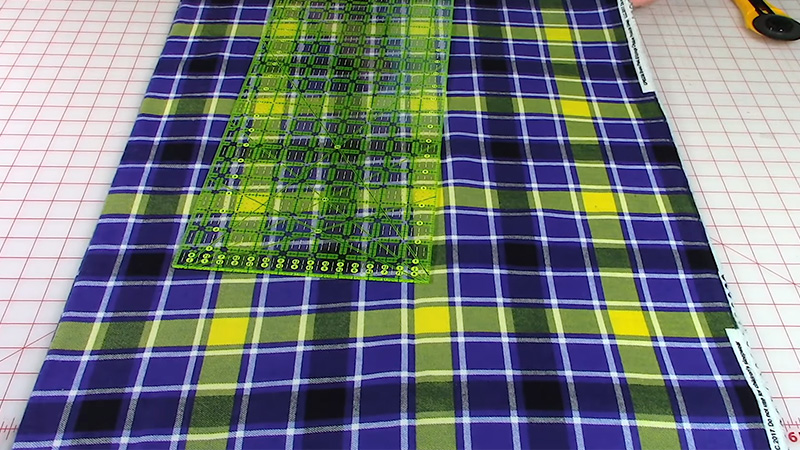
Flannel can be made from various materials, but the softest and coziest flannel is often 100% cotton.
While flannel historically originated from wool and eventually incorporated cotton and silk blends, the popularity of 100% cotton flannel has grown significantly.
Using 100% cotton in flannel production ensures a fabric that is incredibly soft, breathable, and comfortable against the skin.
Cotton fibers have natural moisture-wicking properties, allowing the fabric to absorb and release moisture, keeping the wearer dry and comfortable.
Moreover, 100% cotton flannel offers excellent insulation, trapping body heat within its loosely woven structure. The cotton fibers create numerous air pockets that help retain warmth, making it an ideal choice for cold-weather garments and bedding.
In addition to its comfort and insulating properties, 100% cotton flannel is highly durable and easy to care for. It can withstand regular washing without losing its softness or shape.
Overall, 100% cotton flannel has become the preferred choice for those seeking today’s softest, coziest, and most comfortable fabric.
Is Cotton Flannel Heavy?
Cotton flannel can vary in weight depending on its intended use and construction. While cotton flannel is often associated with a cozy and soft feel, it doesn’t necessarily mean it is heavy.
Cotton flannel fabrics range from lightweight to standard weight, typically weighing around 5 ounces per square yard. This weight suits various garments, including shirts, pajamas, and lighter bedding items.
Lightweight cotton flannel offers comfort and breathability, making it ideal for year-round use in moderate climates or as a layering fabric.
However, cotton flannel can also be available in heavier weights. Flannel that weighs between 8 to 12-13 ounces per square yard is considered heavyweight.
This flannel type provides more warmth and thickness, making it suitable for colder climates or for creating heavier garments, such as jackets, coats, or blankets.
The weight of cotton flannel ultimately depends on the individual’s specific requirements and preferences or the fabric’s desired purpose.
Whether lightweight or heavyweight, cotton flannel retains its softness, comfort, and insulating properties, making it a popular choice for various applications.
Can Flannel Be 100% Polyester?
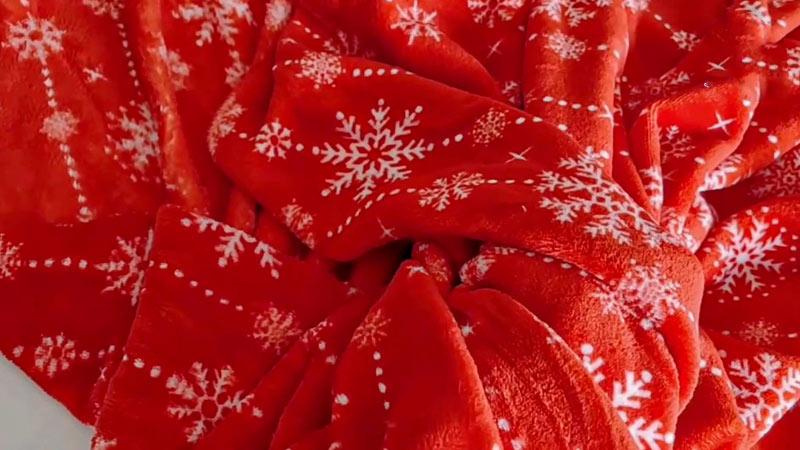
Flannel can be made with synthetic materials like Polyester. While traditional flannel was typically made from natural fibers like cotton or wool, the advancement of textile technology has led to the production of flannel fabric using synthetic materials.
This includes flannel made from 100% polyester.
Polyester flannel offers several advantages: durability, wrinkle resistance, and easy care. It can provide warmth and a soft, cozy feel similar to natural fiber flannel.
Polyester flannel is often lighter and can have moisture-wicking properties to keep the wearer dry.
However, it’s important to note that 100% polyester flannel may have a different texture and drape than natural fiber flannel. Some individuals may prefer cotton or wool flannel’s natural feel and breathability over synthetic alternatives.
The choice between natural fiber or synthetic flannel ultimately depends on personal preferences and specific needs.
Does Flannel Cotton Shrink?
Flannel made from 100% cotton has the potential to shrink when subjected to hot washing and drying. Cotton fibers naturally shrink when exposed to heat, moisture, and agitation.
When the flannel fabric is washed and dried using hot temperatures, it can undergo shrinkage. The shrinkage can vary depending on the specific fabric and its construction, as well as the washing and drying conditions.
On average, flannel made from 100% cotton may shrink approximately 1/2 inch to a full inch in length and about 1/2 inch in width.
To minimize shrinkage, it is advisable to follow the care instructions provided by the manufacturer, which often recommend washing flannel in cold water and drying on a low heat setting.
Pre-washing or pre-shrinking the fabric before sewing or using it for a specific project can also help to reduce the risk of significant shrinkage after construction.
It’s essential to consider the potential for shrinkage when working with flannel fabric to ensure the desired fit and dimensions are achieved.
What is the Gsm of Flannel Fabric?
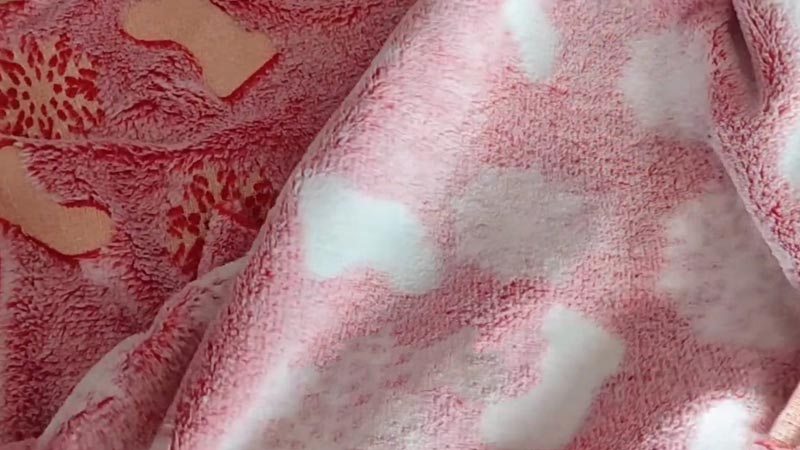
GSM stands for Grams per Square Meter and is a unit of measurement used to determine the weight or density of the fabric. When referring to flannel fabric, GSM indicates the weight of the fabric per square meter.
The GSM of flannel fabric can vary depending on the specific type and intended use. The flannel fabric typically ranges from 120 GSM to 350 GSM.
On the lower end of the spectrum, flannel fabric with a GSM of around 120 is considered lightweight and suitable for lighter clothing items or bedding that require breathability and comfort.
Mid-range GSM for flannel fabric falls between 150-250 GSM, the standard weight range for most flannel products. This weight provides a good balance between warmth and softness.
Heavyweight flannel fabric can have a GSM of 250 or higher, with ranges up to 350 GSM or more. This heavyweight flannel is thicker and warmer and is often used for outerwear, blankets, or colder climates.
The GSM of flannel fabric plays a role in determining its warmth, thickness, and overall quality, allowing buyers to select the appropriate weight based on their specific needs and preferences.
Is Flannel a Luxury Brand?
Flannel is a well-known and respected fashion retailer that has expanded its offerings to cater to men, women, and children.
While it is recognized for its quality and upmarket positioning, it is essential to note that Flannels is not typically considered a luxury brand.
Flannels is renowned for its curated selection of high-end and designer fashion labels, offering a range of premium clothing, accessories, and footwear.
The store aims to provide a luxury shopping experience and prides itself on showcasing various upscale brands.
While Flannels offers a luxurious shopping environment and features prestigious designer labels, it is often categorized as a premium or contemporary retailer rather than a luxury brand.
Luxury brands typically exclusively produce high-end products and often have a rich heritage and reputation within the luxury market.
Nonetheless, Flannels remains a sought-after destination for fashion-conscious individuals seeking quality, high-end fashion from renowned designers.
Why is Flannel So Comfortable?
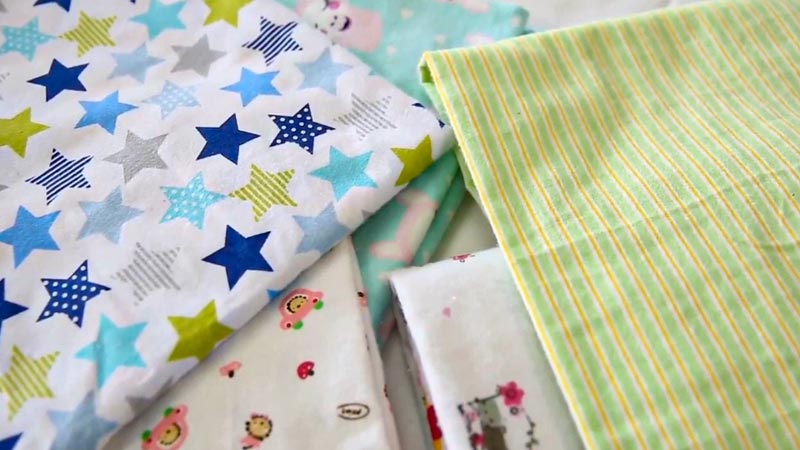
Flannel fabric is renowned for its comfort and coziness, and there are a few key reasons why it is so comfortable to wear or use:
Soft Fibers
Flannel is often made from soft fibers such as wool or cotton. These natural fibers have a gentle and comforting feel against the skin. The softness of the fibers contributes to the overall comfort of flannel fabric, making it pleasant to touch and wear.
Loose Weave
The flannel fabric has a loose weave structure, which allows for increased airflow and breathability. The loose weave also creates tiny pockets of air within the fabric, adding to its insulation properties and providing a cushiony feel.
This helps regulate body temperature, making flannel comfortable in various climates.
Brushed, Napped Texture
Flannel fabric can have a brushed or napped texture, which is achieved by raising the surface fibers through brushing. This creates a fuzzy, plush texture that enhances its softness and comfort.
The brushed texture adds extra warmth and creates a cozy, huggable sensation when in contact with the skin.
Thermal Insulation
Flannel’s loose weave and brushed texture contribute to its thermal insulation properties. The fabric traps air within its fibers and the brushed surface, creating a layer of warmth.
This insulation helps to retain body heat, making flannel an excellent choice for colder weather or cozy indoor environments.
Breathability
Despite its warmth, flannel remains breathable. The loose weave allows air to circulate, preventing overheating and excessive perspiration. This breathability helps maintain a comfortable and dry feel, ensuring the fabric doesn’t become stuffy or clingy.
The combination of soft fibers, loose weave, brushed texture, thermal insulation, and breathability makes flannel fabric exceptionally comfortable. It offers a sense of warmth, softness, and snugness that is highly sought in clothing, bedding, and other products.
Whether it’s a flannel shirt or flannel sheets, the comfort of flannel is a crucial reason for its enduring popularity.
How Do You Wash Flannel Fabric?

When washing flannel fabric, it is essential to follow proper care instructions to maintain its softness and integrity. Here are the recommended steps for washing flannel fabric:
Sort and Prepare
Separate your flannel items by color to avoid color bleeding. Before washing, check for any stains or spots and pretreat them with a mild remover.
Select Gentle Settings
Set your washing machine to the lowest machine setting, usually the delicate or gentle cycle. Use cold water for the wash. Hot water can cause flannel to shrink or lose its shape.
Use Mild Detergent
Choose a gentle, mild detergent specifically formulated for delicate fabrics. Harsh detergents with bleach additives or whitening agents should be avoided, as they can damage the fibers and affect the softness of the fabric.
Load Appropriately
Avoid overloading the washing machine to prevent excessive agitation and friction on the flannel fabric. Overloading can lead to thinning or pilling of the fabric.
Wash similar items together to ensure even washing.
Wash and Rinse
Start the washing machine and allow the cycle to complete. Once the washing cycle is finished, remove the flannel items promptly to prevent excessive wrinkling.
Drying
For best results, air drying is recommended for flannel fabric. If using a dryer, set it to a low heat or delicate setting. Remove the items from the damp dryer to minimize shrinkage, and iron them on a low heat setting if needed.
Does Flannel Need Ironing?
Whether or not flannel needs ironing depends on personal preference and the desired appearance. The flannel fabric is naturally relaxed and slightly textured, which many people find appealing.
Some individuals embrace flannel’s casual, somewhat rumpled aesthetic and choose not to iron it.
However, ironing flannel shirts can benefit if you prefer a crisp and more polished look. Ironing can remove any wrinkles and give the shirt a more finished appearance. It’s important to iron flannel carefully to avoid flattening the texture or creating a shiny appearance.
To iron flannel properly, use a low to medium heat setting on your iron and iron on the reverse side or with a pressing cloth to protect the fabric.
Avoid using excessive steam, as this can lead to shiny spots. Gently press the iron over the fabric without applying too much pressure. Ultimately, whether or not to iron flannel is a matter of personal preference and the desired style.
How to Care for Flannel Clothes?
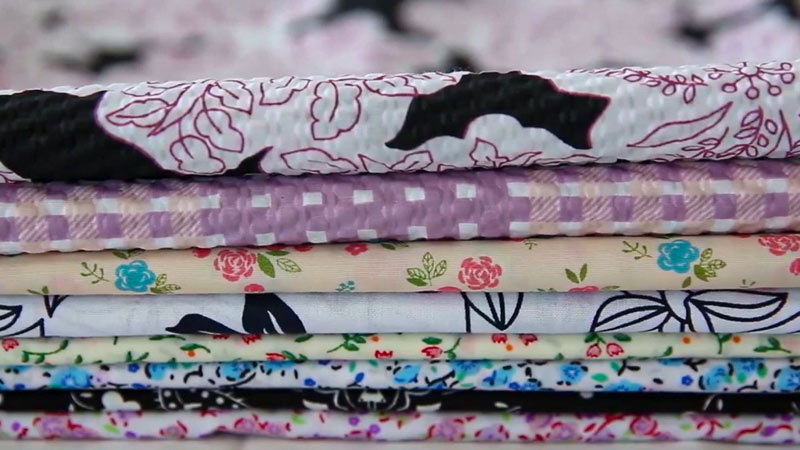
Caring for flannel clothes properly can help maintain their softness, color vibrancy, and overall quality. Here are some tips for caring for your flannel garments:
Washing Temperature
Wash flannel clothes in warm or cool water rather than hot water. Hot water can cause faster fading and may diminish the softness of the fabric. Stick to a gentle cycle setting on your washing machine to minimize agitation.
Mild Detergent
Use a mild detergent specifically designed for delicate fabrics or woolen. Harsh detergents can damage the fibers and affect the texture of the flannel. Avoid using bleach or detergents with bleach additives, as they can cause discoloration.
Gentle Cycle
Opt for the gentle cycle when washing flannel clothes to reduce the risk of excessive friction and potential damage. This will help preserve the fabric’s softness and prevent pilling.
Avoid Overloading
Avoid overloading the washing machine to allow the flannel garments to move freely during the wash. Overcrowding can lead to increased abrasion and tangling, potentially causing damage.
Drying
Air drying is preferable for flannel clothes to maintain their softness and shape. Select a low heat or delicate setting to prevent excessive shrinkage or wrinkling if using a dryer. Remove the clothes from the damp dryer to minimize creasing and ironing needs.
Ironing
If desired, iron flannel clothes on a low to medium heat setting. Iron on the reverse side or use a pressing cloth to protect the fabric. Avoid high heat and excessive steam to prevent flattening the texture or creating shine.
Storage
Store flannel clothes in a cool, dry place away from direct sunlight. Avoid hanging them on sharp or pointy hooks that could cause snags. Consider folding the garments to minimize wrinkles.
How to Sew Flannel Fabric?

Sewing flannel fabric can present some challenges, but you can achieve successful results with the proper techniques. Here are some tips to help you sew flannel fabric effectively:
Pre-wash and Dry
Always pre-wash and dry your flannel fabric before cutting and sewing. This will help prevent shrinkage and distortion of the fabric later on.
Needle and Thread
Use a sharp needle suitable for woven fabrics, such as a universal needle in size 80/12 or 90/14. Ensure that the thread you choose matches the weight and color of your flannel fabric.
Stitch Length and Tension
Adjust your stitch length to a slightly longer setting, around 3 mm, to prevent puckering and maintain a good hold. Lower the tension setting slightly to avoid tight, strained stitches that may break the thread or distort the fabric.
Foot Choice
Consider using a walking foot or a roller foot. These specialized presser feet can help feed the fabric evenly and prevent stretching or distortion as you sew.
Seam Finishing
The flannel fabric tends to fray, so finishing your seams is essential. You can use a zigzag stitch, a serger if available, or even a straight stitch with the raw edges enclosed in a seam binding or bias tape.
Pressing
Take care when pressing flannel fabric. Use a low to medium heat setting on your iron, and always place a pressing cloth or a piece of lightweight cotton fabric between the iron and the flannel to prevent scorching or flattening the fabric’s texture.
How Does Flannel Fabric Impact the Environment?
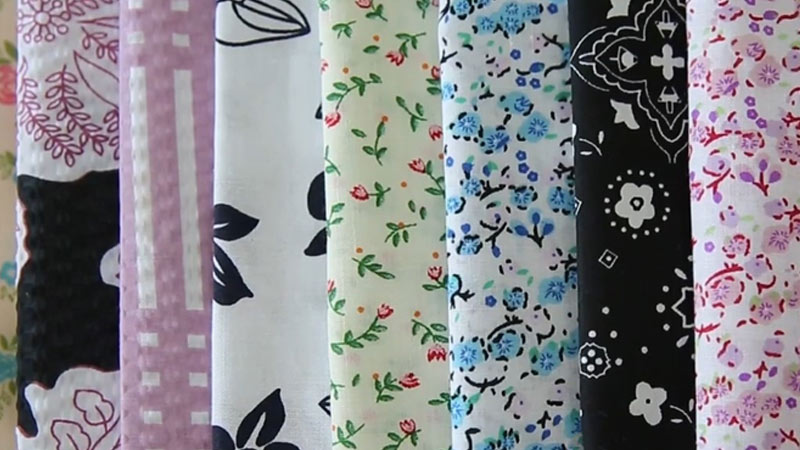
Flannel fabric, while cherished for its softness and warmth, does have environmental impacts that should be considered. Here are some critical aspects of how flannel fabric can impact the environment:
Water Consumption
The production of flannel fabric, especially when made from wool or cotton, requires significant amounts of water. Growing and processing these natural fibers involves irrigation, washing, and dyeing, contributing to water consumption.
Chemical Pollution
Flannel fabric often undergoes chemical treatments, such as dyeing and bleaching, which can lead to the release of harmful substances into water sources. These chemicals can contribute to water pollution and harm aquatic ecosystems.
Energy Consumption
The manufacturing process of flannel fabric, mainly when synthetic fibers like Polyester are used, involves the consumption of energy and the emission of greenhouse gases.
The extraction, processing, and transportation of raw materials also contribute to the overall energy footprint of flannel fabric production.
Waste Generation
Due to the fuzzy nature of the flannel fabric, it tends to wear out more quickly than other fabrics. This leads to a higher turnover of flannel products, resulting in increased textile waste.
Flannel fabric can be challenging to recycle or compost due to its mixed composition and chemical residues.
Landfill Impact
Disposing of flannel fabric in landfills contributes to the accumulation of textile waste. As flannel fabric decomposes, it releases methane, a potent greenhouse gas contributing to climate change.
Considering these environmental impacts, making conscious choices when using and disposing of flannel fabric is vital. Opting for sustainable and eco-friendly alternatives, such as organic cotton or recycled synthetic fibers, can help mitigate some of these concerns.
Additionally, extending the lifespan of flannel products through proper care and repair can reduce the overall environmental impact.
Advantages and Disadvantages of Flannel Fabric
Advantages of Flannel Fabric
- Warmth and Coziness: Flannel fabric is known for its warmth and cozy feel, making it a popular choice for cold-weather clothing, bedding, and snuggly blankets.
- Durability: Flannel fabric is generally durable and can withstand regular use and washing. It is often made from solid fibers like wool or cotton, contributing to its long-lasting nature.
- Easy Care: Flannel fabric is easy to care for, as it can be machine-washed and dried. This convenience makes it a practical choice for everyday use.
- Variety of Colors and Patterns: Flannel fabric comes in a wide range of colors and patterns, offering plenty of options for personal style and design preferences. Popular patterns include plaid, stripes, and solids.
Disadvantages of Flannel Fabric
- Shrinkage and Fading: Flannel fabric, mainly made from natural fibers like cotton or wool, can shrink or fade over time, particularly when exposed to hot water or sunlight. Proper care and following care instructions can help mitigate these issues.
- Pilling and Lint: Flannel fabric tends to pill, forming small, fuzzy balls on the surface due to friction. Additionally, it may produce lint, which can affect its appearance and require regular maintenance.
- Weight and Heat: Flannel fabric can be too heavy or hot for some individuals or climates. While it provides warmth, it may not be suitable for warmer temperatures or for those who prefer lighter fabrics.
Despite its disadvantages, the flannel fabric remains famous for its softness, warmth, and versatility. By understanding and addressing these potential drawbacks, individuals can make informed decisions about using and caring for the flannel fabric to maximize its benefits.
Comparison Table Between Flannel Fabric and Other Fabrics
| Fabric | Softness | Warmth | Durability | Breathability | Ease of Care |
|---|---|---|---|---|---|
| Flannel | High | High | Moderate | Moderate | Easy |
| Fleece | High | High | Moderate | Low | Easy |
| Velvet | High | Moderate | Moderate | Low | Moderate |
| Chenille | High | High | Moderate | Low | Moderate |
| Sherpa | High | High | High | Low | Moderate |
FAQs
Flannel fabric is generally more suitable for cooler seasons due to its warmth and cozy texture. However, lightweight flannel can be comfortable in milder climates or as a layering option during transitional seasons.
Due to its insulating properties, flannel fabric is often used for outdoor camping or hiking. It provides warmth and comfort in cooler temperatures, making it a popular choice for outdoor enthusiasts.
Flannel fabric, especially when made from natural fibers like cotton or wool, has the potential to shrink when exposed to hot water or high heat in the dryer.
To minimize shrinkage, it is advisable to follow care instructions, wash in cold water, and air dry or use a low heat setting.
Flannel fabric is typically associated with casual or relaxed clothing but can be incorporated into formal attire. A tailored flannel suit or dress can convey a sophisticated and distinctive look in specific contexts.
Flannel fabric is commonly used for baby clothing due to its softness and gentle touch against delicate skin. It provides warmth and comfort, making it a popular choice for onesies, pajamas, and swaddle blankets.
Yes, flannel fabric can be used for various home decor purposes. It is often used for making curtains, throw pillows, and upholstery due to its soft texture and insulating properties.
To Recap
Flannel fabric is a versatile and beloved material known for its softness, warmth, and cozy texture. Whether made from wool, cotton, or synthetic fibers, flannel offers comfort and insulation, making it suitable for various applications such as clothing, bedding, and home decor.
Its loose weave and brushed or napped texture create air pockets that trap warmth, providing a snug and comforting experience. Flannel fabric comes in various colors and patterns, allowing for personal expression and style.
While it has some considerations regarding shrinkage, fraying, and environmental impacts, proper care and awareness can help mitigate these factors.
Overall, flannel fabric continues to be cherished for its comfort, making it a popular choice for those seeking a warm and inviting fabric for their everyday needs.
Leave a Reply